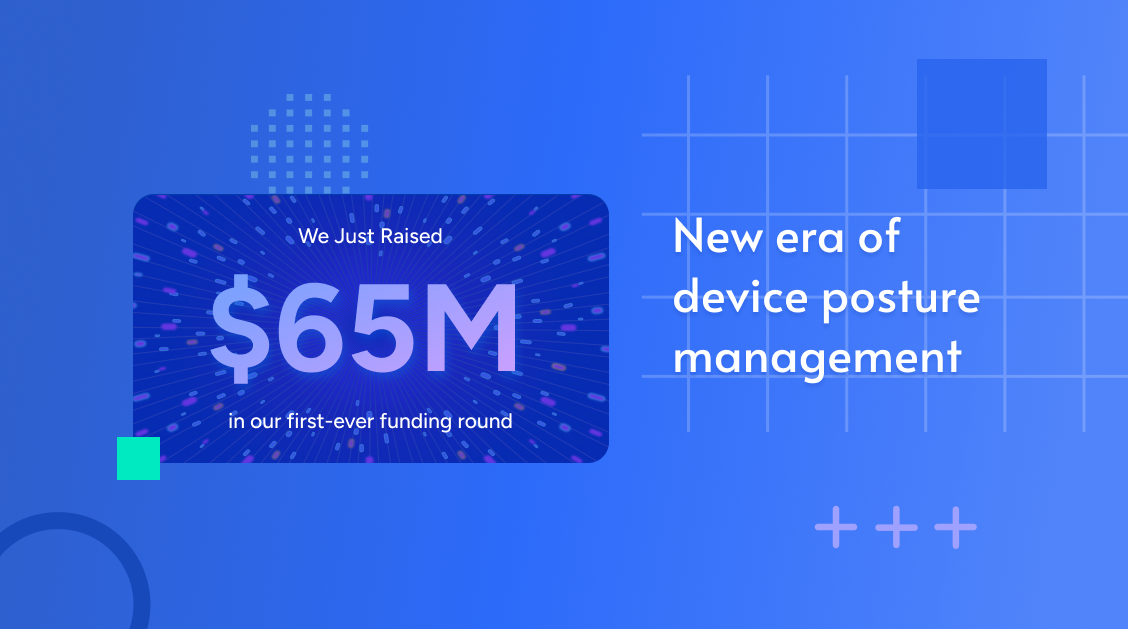Security leaders invest heavily in the front door: phishing defenses, malware de...
Configuration Drift: The Hidden Threat Eroding Your Security

Things just don't seem to stay how they're meant to. It's a problems familiar to most people in the world of enterprise IT and Security. And in 2005 it was a problem for the Burnet Institute in Melbourne. Only instead of settings breaking rank or renegade devices slipping past enforcement, it was teaspoons that kept disappearing from the office kitchen.
What started as workplace frustration turned into a rigorous epidemiological study published in the British Medical Journal. The researchers tracked 70 numbered teaspoons across eight office kitchens for five months. The results were startling: 80% of the teaspoons disappeared entirely, with a half-life of just 81 days. Even more telling, teaspoons in communal areas vanished nearly twice as fast as those in dedicated team spaces.
And it wasn't a simple case of convenience-driven misplacement — with spoons scatters in desk drawers across the office. No, the spoons were well and truly gone. Nor was it a one-off. Like all good scientific research, the results were replicated and the outcome remained largely the same.
What makes this paper so interesting though is how difficult the observed — or rather inferred — behavior is to explain. It's not like those garden-variety mass-produced spoons had any value. There was no appreciable incentive to steal them.
But maybe that's the whole point: the inevitability of drift.
No matter the context, no matter the reason, you'll start with things one way and end with them another way. Perhaps it's baked into the human condition or perhaps it's woven into the fabric of nature.
Like spoon disappearances, configuration drift rarely announces itself. There’s no system alert for ‘policy silently ignored’ or ‘baseline eroded.’ It just happens — quietly, subtly — until the integrity of your environment is fundamentally changed.
Why Configuration Drift Matters
Configuration drift occurs when the settings, policy enforcements, or behaviors of systems deviate over time from the organization's defined security baselines or configuration standards.
Configuration drift comes in several forms:
-
Technical Drift: Unauthorized or untracked changes to system settings, services, or configurations — often due to software updates, manual overrides, or incomplete deployments.
-
Policy Drift: Failures in enforcement where Group Policies (GPOs), MDM configurations, or security baselines don’t reach or remain active on their intended endpoints — often due to loopback misconfigurations, ADMX issues, or filtering errors.
-
Compliance Drift: Gradual misalignment with regulatory frameworks (e.g., CIS, NIST, HIPAA) as requirements evolve or as systems deviate from originally compliant states.
Just like those vanishing teaspoons, your carefully crafted system design and designations don't disappear overnight. They erode gradually through small, inconspicuous occurrences:
-
A developer disables PowerShell logging to debug a script, but forgets to re-enable it — leaving forensic blind spots.
-
An emergency fix requires elevated local admin rights on a production server, which are never revoked.
-
A patch bypasses the standard SCCM/Intune workflow, resulting in inconsistent firewall rules across devices.
-
A newly onboarded device is missing the certificate trust store update, causing HTTPS inspection to fail silently.
-
A feature update resets Remote Desktop Protocol (RDP) settings to default, inadvertently opening external access.
These examples are not at all uncommon. And while most are meant to be temporary deviations rather than long-term changes, the more often they happen, the less likely the organization is to fully return to baseline. Same as with the teaspoons, it’s what happens when shared responsibility becomes no one’s responsibility, and when small changes compound unnoticed.
Every undocumented tweak or inconsistent deployment adds risk. It's like death by a thousand paper cuts — it happens in tiny increments, but faster than you'd think. Whether or not each action is individually minor or justifiable, in the aggregate and over time, they add considerable risk.

Attackers are increasingly exploiting configuration drift — not just software vulnerabilities. Drift introduces small, often invisible gaps that weaken your security posture in ways traditional tools don’t catch. Misconfigured ports, disabled logging, overly permissive access, and forgotten services become entry points, escalation vectors, and persistence mechanisms — not because they’re sophisticated, but because they’re overlooked.
These aren't zero-days. They're everydays.
Drift also breaks policy enforcement. A GPO that’s misapplied due to AD filtering or loopback issues might leave systems without BitLocker enabled, leaving sensitive data exposed. Attackers know how to look for these inconsistencies using tools like BloodHound, SharpGPOAbuse, and PowerView.
Configuration drift is the attacker’s best friend: it erodes the boundaries, widens the blast radius, and undermines the assumptions defenders rely on. In fact, over 80% of ransomware attacks exploit poor configurations rather than unpatched CVEs.
It doesn't stop there. Once inside, an attacker might create a local admin account for later re-entry. And the more you drift, the more difficult it becomes to centralize control or ensure continuous enforcement. All of which increases the chance that our rogue admins will persist for weeks or months without detection.
Returning to Form
The solution isn't just policy creation — it's policy enforcement with validation. Combatting drift requires:
-
Continuous configuration monitoring
-
Automated remediation
-
Baseline integrity enforcement
-
Real-time visibility into enforcement gaps
In dynamic environments, only automated and adaptive controls can prevent today’s small missteps from becoming tomorrow’s breach headlines.
Preventing drift requires continuous monitoring at the device and service level. Remedio monitors configuration states in real time and compares them to the organization's secure baselines - identifying cases of deviation in real time. In this way, Remedio empowers operators to bring the field back in line with the lab at the push of a button — whether the drift is due to manual overrides, failed updates, or policy conflicts.
Unlike one-off audits or reactive scripts, our approach is continuous, scalable, and built to keep drift away on an ongoing basis, without ever negatively impacting business operations.
Configuration Drift: Inevitable No More?
In cybersecurity — as in shared office kitchens — it’s the little things left unattended that eventually create the biggest messes. But unlike vanishing teaspoons, the impact of misconfigurations and unchecked drift isn’t just mildly frustrating. It can lead to outages, compliance failures, security blind spots, and in the worst cases, catastrophic breaches.
The good news? Unlike teaspoons, you can keep control of your infrastructure.
With Remedio, configuration drift doesn’t have to be an accepted fact of operational life. We help teams move from passive detection to active prevention — delivering real-time visibility, automated enforcement, and continuous alignment with secure baselines. That means no more wondering what’s silently changed, or where policies may have quietly slipped through the cracks.
So while those spoons may be gone forever, your security posture doesn’t have to disappear with them. With the right tools in place, you can bring back order, control, and confidence to your environment — and keep drift from becoming destiny.
About Author

Jamie Byers
Subscribe to
our Newsletter
We are ready to help you until and unless you find the right ladder to success.
Related Posts
Join over 25,000 in beating the failure of strategies by following our blog.
If a threat falls in the SOC and no one ties it to revenue, does it really make ...
7 minute read
Picture the legendary Metropolitan Opera House on opening night. The air hums wi...
6 minute read
In cybersecurity, the smallest missteps can lead to the biggest breaches. Take B...








Comments